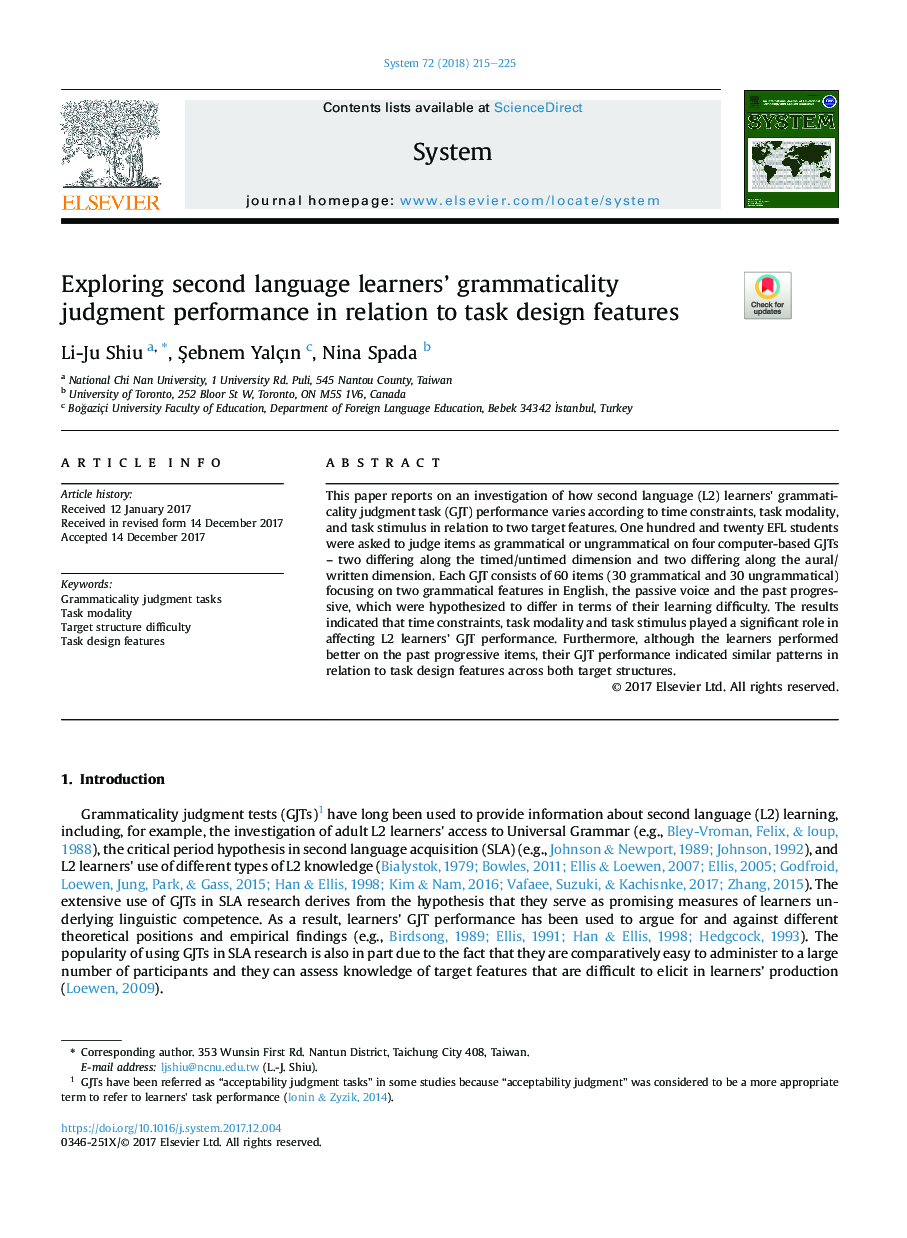| Article ID | Journal | Published Year | Pages | File Type |
|---|---|---|---|---|
| 6849429 | System | 2018 | 11 Pages |
Abstract
This paper reports on an investigation of how second language (L2) learners' grammaticality judgment task (GJT) performance varies according to time constraints, task modality, and task stimulus in relation to two target features. One hundred and twenty EFL students were asked to judge items as grammatical or ungrammatical on four computer-based GJTs -- two differing along the timed/untimed dimension and two differing along the aural/written dimension. Each GJT consists of 60 items (30 grammatical and 30 ungrammatical) focusing on two grammatical features in English, the passive voice and the past progressive, which were hypothesized to differ in terms of their learning difficulty. The results indicated that time constraints, task modality and task stimulus played a significant role in affecting L2 learners' GJT performance. Furthermore, although the learners performed better on the past progressive items, their GJT performance indicated similar patterns in relation to task design features across both target structures.
Related Topics
Social Sciences and Humanities
Arts and Humanities
Language and Linguistics
Authors
Li-Ju Shiu, Åebnem Yalçın, Nina Spada,
